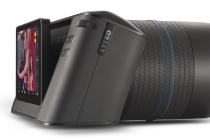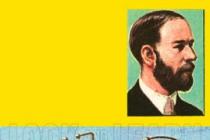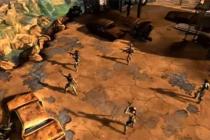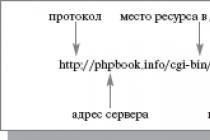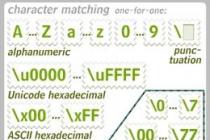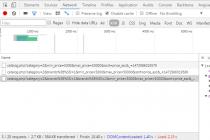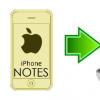Discovered by André Marie Ampère in 1820, the law of interaction of electric currents laid the foundation for the further development of the science of electricity and magnetism. After 11 years, Michael Faraday experimentally found that a changing magnetic field generated by an electric current is capable of inducing an electric current in another conductor. That's how it was created.
In 1864, James Clerk Maxwell finally systematized Faraday's experimental data, giving them the form of exact mathematical equations, thanks to which the basis of classical electrodynamics was created, because these equations described the relationship of the electromagnetic field with electric currents and charges, and the existence of electromagnetic waves should have been a consequence of this.
In 1888, Heinrich Hertz experimentally confirmed the existence of electromagnetic waves predicted by Maxwell. His Rumkorff coil interrupted spark transmitter could produce electromagnetic waves up to 0.5 gigahertz, which could be received by multiple receivers tuned to resonance with the transmitter.

The receivers could be located at a distance of up to 3 meters, and when a spark appeared in the transmitter, sparks also appeared in the receivers. So were held first experiments in wireless transmission of electrical energy using electromagnetic waves.
In 1891, while studying alternating currents of high voltage and high frequency, he came to the conclusion that it is extremely important for specific purposes to select both the wavelength and the operating voltage of the transmitter, and it is not at all necessary to make the frequency too high.
The scientist notes that the lower limit of frequencies and voltages at which he managed to achieve the best results at that time is from 15,000 to 20,000 oscillations per second at a potential of 20,000 volts. Tesla received a high frequency and high voltage current by applying an oscillatory discharge of a capacitor (see -). He observed that this kind of electrical transmitter was suitable both for the production of light and for the transmission of electricity for the production of light.

In the period from 1891 to 1894, the scientist repeatedly demonstrates wireless transmission and the glow of vacuum tubes in a high-frequency electrostatic field, while noting that the energy of the electrostatic field is absorbed by the lamp, transforming into light, and the energy of the electromagnetic field used for electromagnetic induction in order to obtain a similar The result is mainly reflected, and only a small fraction of it is converted into light.
Even using resonance when transmitting using an electromagnetic wave, a significant amount of electrical energy cannot be transmitted, the scientist argued. His goal during this period of work was to transmit precisely a large amount of electrical energy in a wireless way.
Until 1897, in parallel with the work of Tesla, research on electromagnetic waves was carried out by Jagdish Bose in India, Alexander Popov in Russia, and Guglielmo Marconi in Italy.
Following Tesla's public lectures, Jagdish Bose speaks in November 1894 in Calcutta with a demonstration of wireless transmission of electricity, where he ignites gunpowder, transmitting electrical energy over a distance.
After Boche, namely April 25, 1895, Alexander Popov, using Morse code, transmitted the first radio message, and this date (May 7, according to the new style) is now celebrated annually in Russia as "Radio Day".
In 1896, Marconi, having arrived in the UK, demonstrated his apparatus, transmitting a signal using Morse code over a distance of 1.5 kilometers from the roof of the post office building in London to another building. After that, he improved his invention and managed to transmit a signal along the Salisbury Plain already at a distance of 3 kilometers.

Tesla in 1896 successfully transmits and receives signals at a distance between transmitter and receiver of about 48 kilometers. However, none of the researchers has managed to transmit a significant amount of electrical energy over a long distance.
Experimenting in Colorado Springs, in 1899 Tesla wrote: "The inconsistency of the method of induction seems to be enormous in comparison with the method of excitation of the charge of the earth and air." This will be the beginning of the scientist's research aimed at transmitting electricity over long distances without the use of wires. In January 1900, Tesla would record in his diary the successful transfer of energy to a coil "far out in the field" from which the lamp was powered.

And the most grandiose success of the scientist will be the launch on June 15, 1903 of the Wardenclyffe tower on Long Island, designed to transmit electrical energy over a considerable distance in large quantities without wires. The grounded secondary winding of the resonant transformer, crowned with a copper spherical dome, had to excite the charge of the earth and the conductive layers of air in order to become an element of a large resonant circuit.

So the scientist managed to power 200 lamps of 50 watts at a distance of about 40 kilometers from the transmitter. However, based on economic feasibility, funding for the project was stopped by Morgan, who from the very beginning invested in the project in order to get wireless communications, and the transfer of free energy on an industrial scale over a distance did not suit him as a businessman. In 1917, the tower, designed for the wireless transmission of electrical energy, was destroyed.
Much later, in the period from 1961 to 1964, an expert in the field of microwave electronics, William Brown, experimented in the USA with microwave energy transmission paths.

In 1964, for the first time, he tested a device (a model of a helicopter) capable of receiving and using the energy of a microwave beam in the form of direct current, thanks to an antenna array consisting of half-wave dipoles, each of which is loaded with high-performance Schottky diodes. Already by 1976, William Brown had transmitted a power of 30 kW by a microwave beam over a distance of 1.6 km with an efficiency exceeding 80%.
In 2007, a research group at the Massachusetts Institute of Technology, led by Professor Marin Solyachich, managed to wirelessly transmit energy over a distance of 2 meters. The transmitted power was enough to power a 60 watt light bulb.

Their technology (called ) is based on the phenomenon of electromagnetic resonance. The transmitter and receiver are two copper coils resonating with the same frequency, each 60 cm in diameter. The transmitter is connected to a power source, and the receiver is connected to an incandescent lamp. The circuits are tuned to a frequency of 10 MHz. The receiver in this case receives only 40-45% of the transmitted electricity.
Around the same time, a similar technology for wireless power transmission was demonstrated by Intel.

In 2010, Haier Group, a Chinese home appliance manufacturer, unveiled its unique product, a fully wireless LCD TV based on this technology, at CES 2010.
According to history, the revolutionary technological project was frozen due to Tesla's lack of proper financial resources (this problem haunted the scientist almost all the time he worked in America). Generally speaking, the main pressure on him came from another inventor - Thomas Edison and his companies, who promoted DC technology, while Tesla was engaged in alternating current (the so-called "Current War"). History has put everything in its place: now alternating current is used almost everywhere in urban power networks, although echoes of the past reach our days (for example, one of the stated reasons for the breakdowns of the notorious Hyundai trains is the use of direct current power lines in some sections of the Ukrainian railway).

Wardenclyffe Tower, where Nikola Tesla conducted his experiments with electricity (photo from 1094)
As for the Wardenclyffe tower, according to legend, Tesla demonstrated to one of the main investors, J.P. Morgan, a shareholder in the world's first Niagara hydroelectric power plant and copper plants (copper is known to be used in wires), a working installation for wireless transmission of current, the cost to consumers of which would be (earn such installations on an industrial scale) an order of magnitude cheaper for consumers, after which he curtailed the financing of the project. Whatever it was, they started talking seriously about wireless transmission of electricity only 90 years later, in 2007. And while there is still a long way to go before power lines completely disappear from the urban landscape, pleasant little things like wireless charging of a mobile device are already available.
Progress crept up unnoticed
If we look through the archives of IT news at least two years ago, then in such collections we will find only rare reports that certain companies are developing wireless chargers, and not a word about finished products and solutions (except for the basic principles and general schemes ). Today, wireless charging is no longer something super original or conceptual. Such devices are sold with might and main (for example, LG demonstrated its chargers at MWC 2013), tested for electric vehicles (Qualcomm is doing this), and even used in public places (for example, at some European railway stations). Moreover, there are already several standards for such transmission of electricity and several alliances promoting and developing them.

Similar coils are responsible for wireless charging of mobile devices, one of which is in the phone, and the other is in the charger itself.
The best-known such standard is the Qi standard developed by the Wireless Power Consortium, which includes well-known companies such as HTC, Huawei, LG Electronics, Motorola Mobility, Nokia, Samsung, Sony, and about a hundred other organizations. This consortium was organized in 2008 with the aim of creating a universal charger for devices of various manufacturers and brands. In its work, the standard uses the principle of magnetic induction, when the base station consists of an induction coil that creates an electromagnetic field when AC is supplied from the network. In the device being charged, there is a similar coil that reacts to this field and is able to convert the energy received through it into direct current, which is used to charge the battery (you can learn more about the principle of operation on the consortium website http://www.wirelesspowerconsortium.com/what -we-do/how-it-works/). In addition, Qi supports a 2Kb/s communication protocol between chargers and devices to be charged, which is used to communicate the required amount of charge and the required operation.

Wireless charging according to the Qi standard is currently supported by many smartphones, and chargers are universal for all devices that support this standard.
Qi also has a serious competitor - the Power Matters Alliance, which includes AT&T, Duracell, Starbucks, PowerKiss and Powermat Technologies. These names are not at the forefront in the world of information technology (especially the Starbucks coffee chain, which is in an alliance due to the fact that it is going to introduce this technology everywhere in its establishments) - they specialize specifically in energy issues. This alliance was formed not so long ago, in March 2012, within the framework of one of the IEEE (Institute of Electrical and Electronics Engineers) programs. The PMA standard promoted by them works on the principle of mutual induction - a particular example of electromagnetic induction (which should not be confused with the magnetic induction used by Qi), when a change in current in one of the conductors or a change in the relative position of the conductors causes a change in the magnetic flux through the circuit of the second, created magnetic field generated by the current in the first conductor, which causes the occurrence of an electromotive force in the second conductor and (if the second conductor is closed) an induction current. Just as in the case of Qi, this current is then converted to direct current and fed into the battery.
Well, do not forget about the Alliance for Wireless Power, which includes Samsung, Qualcomm, Ever Win Industries, Gill Industries, Peiker Acustic, SK Telecom, SanDisk, etc. This organization has not yet presented ready-made solutions, but among its goals , including the development of chargers that would work through non-metal surfaces and that would not use coils.

One of the goals of the Alliance for Wireless Power is the ability to charge without being tied to a specific place and type of surface.
From all of the above, we can draw a simple conclusion: in a year or two, most modern devices will be able to recharge without using traditional chargers. In the meantime, wireless charging power is enough mainly for smartphones, however, such devices will also appear soon for tablets and laptops (Apple recently patented wireless charging for the iPad). This means that the problem of discharging devices will be solved almost completely - put or put the device in a certain place, and even during operation it charges (or, depending on the power, discharges much more slowly). Over time, there is no doubt that their range will expand (now you need to use a special mat or stand on which the device lies, or it must be very close), and they will be installed everywhere in cars, trains and even, possibly, airplanes.
Well, and one more conclusion - most likely, it will not be possible to avoid another war of formats between different standards and alliances that promote them.
Will we get rid of wires?
Wireless charging of devices is a good thing, of course. But the power that arises from it is sufficient only for the stated purposes. With the help of these technologies, it is not yet possible to even light up a house, not to mention the operation of large household appliances. Nevertheless, experiments on high-power wireless transmission of electricity are being conducted and they are based, among other things, on Tesla's materials. The scientist himself proposed to install around the world (here, most likely, developed countries at that time were meant, which were much smaller than now) more than 30 receiving and transmitting stations that would combine energy transmission with broadcasting and directional wireless communication, which would allow get rid of numerous high-voltage transmission lines and promoted the interconnection of electric generating facilities on a global scale.
Today there are several methods for solving the problem of wireless power transmission, however, all of them so far allow achieving globally insignificant results; It's not even about kilometers. Methods such as ultrasonic, laser and electromagnetic transmission have significant limitations (short distances, the need for direct visibility of transmitters, their size, and in the case of electromagnetic waves, very low efficiency and harm to health from a powerful field). Therefore, the most promising developments are associated with the use of a magnetic field, or rather, resonant magnetic interaction. One of them is WiTricity, developed by the WiTricity corporation, founded by MIT professor Marin Solyachich and a number of his colleagues.
So, in 2007, they managed to transmit a current of 60 W at a distance of 2 m. It was enough to light a light bulb, and the efficiency was 40%. But the indisputable advantage of the technology used was that it practically does not interact with living beings (the field strength, according to the authors, is 10 thousand times weaker than what reigns in the core of a magnetic resonance tomograph), or with medical equipment ( pacemakers, etc.), or with other radiation, which means it will not interfere, for example, with the operation of the same Wi-Fi.
What is most interesting, the efficiency of the WiTricity system is affected not only by the size, geometry and setting of the coils, as well as the distance between them, but also by the number of consumers, and in a positive way. Two receiving devices, placed at a distance of 1.6 to 2.7 m on either side of the transmitting "antenna", showed 10% better efficiency than separately - this solves the problem of connecting many devices to one power source.
We present a device for transmitting electricity without wires with a coefficient of performance (COP) of about 100%. In the future, the efficiency value of ≈ 100% will be substantiated and, of course, we demonstrate this value with our experimental device.
The importance of the problem of wireless transmission of electricity is beyond doubt - overcoming natural barriers (rivers, mountains and valleys); backup power supply, electric transport, solving a number of problems of wireless power supply for household and industrial devices, etc. - all these are elements of the named problem.
A bit of history
For the first time, the problem of wireless transmission of electricity was identified at the dawn of the last century by N. Tesla. His demonstration device was based on the method of emitting and receiving electromagnetic waves by an open resonant circuit, which contains an antenna - a capacitance and a coil of wire - an inductance. The characteristic indicators of Tesla's device are reduced to the following: efficiency = 4%, transmission range - 42 km, maximum dimension of the antenna tower - 60 m, wavelength - 2000 m. It is significant that in Tesla's device the planet Earth is considered as one of the wires in the transmission of electricity , since the emission and reception of such long waves without grounding is not effective.
After Tesla's experiments, throughout the last twentieth century, all attempts to carry out wireless transmission of electricity with acceptable efficiency turned out to be fruitless.
In the current decade, work is directly or indirectly reported at the Massachusetts Institute of Technology under the direction of M. Solya-chich. Their work is based on the well-known induction, with the help of a magnetic field, method of transmitting electricity, which is implemented by resonant flat inductors. This method ideally provides efficiency = 50%, with a transmission range commensurate with the dimensions of the antenna coils. The characteristic indicators of their demonstration device are as follows: efficiency ≈ 40%, transmission range - 2 m, antenna coil size - 0.6 m, wavelength - 30 m.
Energetically closed system
In our device, as in Tesla's device, the energy carrier is electromagnetic waves, i.e. the well-known Poynting vector operates.
The following is theoretically substantiated and experimentally confirmed: the transmitting and receiving antennas of the wireless power transmission device form an energetically closed system, partially including the energy of the Earth's electromagnetic field; Through the excitation (activation) of the Earth's electromagnetic field in this system, electricity is transferred from the transmitting antenna to the receiving antenna with an efficiency of ≈ 100% (Fig. 1).
Fig. 1

Fig. 2
Using this antenna, it is easy to formulate a problem, the solution of which will ensure the transmission of electricity without wires:
1. Transmitting and receiving antennas must excite (activate) the Earth's electromagnetic field in a local (limited) region of space;
2. The excited electromagnetic field of the Earth must also be local in space and not consume energy (it must be a standing electromagnetic wave between the transmitting and receiving antennas).
The solution to this problem is unrealistic with antennas created on the basis of spatial representations of Euclid's geometry with its famous 5th postulate - the postulate of parallel lines. This postulate in school textbooks reads: Through a point not on a given line, only one line can be drawn parallel to the given line.
fig. 3
The notoriety of this postulate lies in the fact that, starting from the 1st century. BC, for 2000 years the best minds of the world tried unsuccessfully to prove it as a theorem. And in 1826, the Russian Lobachevsky outlined the foundations of his geometry, in which the 5th postulate of Euclid's geometry was formulated, in fact, by its negation: Through a point not on a given line, at least two lines parallel to the given line can be drawn.

fig. 4
And although this postulate is not very consistent with our spatial ideas, Lobachevsky's geometry is consistent and has been serving physicists regularly in recent times. For example, the geometry of Lobachevsky is involved in the description of a huge number of phenomena from vibrations in mechanical transmission lines to the interaction of elementary particles and processes in the membrane of a living cell.
Pseudosphere
True, until 1863, for almost 40 years, Lobachevsky's geometry was perceived as something that had nothing to do with reality. But, in 1863, the Italian mathematician Beltrami established that all the properties of the Lobachevsky geometry plane are realized on the surface of a pseudosphere - a geometric body, the properties of which coincide or are opposite to the properties of the sphere. In FIG. 5 shows a pseudosphere, and Fig. 6 its generatrix is a tractrix with asymptote X'X. With the equality of the radii of large circles (parallels) of the pseudosphere and the sphere, it is possible to quantitatively compare the volumes and areas of their surfaces.

fig. 5

fig. 6
It is in the form of semi-pseudospheres that the antennas of our device are made; we are demonstrating a device with the following characteristics: efficiency = 100%, transmission range - 1.8 m, maximum antenna coil size - 0.2 m, wavelength - 500 m, grounding is not necessary.
It should be noted here that the totality of the named characteristics of the demonstration device contradicts the basics of classical electrodynamics - radio engineering.
What properties of semi-pseudosphere antennas provide such characteristics of our device?
Among more than a dozen extraordinary properties of the pseudosphere, the following deserves attention first of all:
The body of the pseudosphere, infinitely extended in space, has a finite volume and a finite surface area.
It is this property of the pseudosphere that makes it possible, with the help of half-pseudosphere antennas, to create a finite, space-limited, energetically closed system, which is a necessary condition for energy transfer from efficiency = 100%.
The second fundamental problem, which is solved in our device, concerns the medium that fills the mentioned energetically closed system. The bottom line is that only in quantum electrodynamics, the fruit of which are lasers and masers, is the medium considered active. On the contrary, in classical electrodynamics, the medium refers to passive objects; it is associated with attenuation, the loss of electromagnetic energy during propagation.
Unbelievable, but true, in our device is the activation of the electric and magnetic fields of the Earth. These fields are objects of the environment in our device, since they fill the mentioned energetically closed system. The activation of this medium is also a consequence of the properties of the pseudosphere.
The bottom line is that all points on the surface of the pseudosphere are, according to mathematicians, hyperbolic, discontinuous in space. With regard to the semi-pseudosphere antennas of our device, this is tantamount to discontinuities, quantization of the electric and magnetic fields at each point of the winding wire of the coils of the semi-pseudosphere antennas. This leads to electromagnetic disturbances - waves, the length of which is commensurate with the diameter of the winding wire of the coils of the half-pseudosphere antennas, i.e. in practice, the length of such waves is on the order of 1 mm or less. Such electromagnetic waves, as evidenced by theory and practice, are capable, through the polarization of air molecules or directly, to activate the electromagnetic field of the Earth and thereby compensate for the loss of electromagnetic energy on the way of its transmission in our device. This is also necessary to explain the efficiency = 100%.
Not only that, we have declared a generator of excess electromagnetic energy, the energy conversion coefficient (KPI) of which is more than 400%; those. comparable to the KPIs of known heat pumps.
And about the last, third task, which is solved in our device.
It is well known that energy is transported in space only by a traveling electromagnetic wave, a wave in which the electric and magnetic fields are in phase. This condition cannot be realized at a distance of 1.8 m at a wavelength of 500 m. But it is also well known that the speed of a traveling electromagnetic wave along a straight or curved conductor slows down, decreases in comparison with the speed in free space; the wavelength also decreases. This effect is widely used in electrical and radio engineering in the so-called retarding systems. The reduction in the wavelength in these systems ranges from tenths of a unit with straight wires to 30 units with curvilinear (spiral) ones.
It is the effect of slowing down, reducing the wavelength that allows us to form a traveling wave at short distances in our device.
Indeed, the wavelength of our demo device is reduced to the wavelength mentioned above ![]() , which forms a traveling, energy-carrying electromagnetic wave in our device. In this case, the wave reduction coefficient is equal to
, which forms a traveling, energy-carrying electromagnetic wave in our device. In this case, the wave reduction coefficient is equal to ![]() units. Such a huge decrease in the wavelength also explains the experimental fact that our device works effectively even without grounding the transmitter and receiver of electricity.
units. Such a huge decrease in the wavelength also explains the experimental fact that our device works effectively even without grounding the transmitter and receiver of electricity.
Another amazing property of the pseudosphere is involved in the operation of our device:
the volume of the pseudosphere is half the volume of the sphere, while the areas of their surfaces are equal.
It follows from this property that the volume of a sphere bounded by its own surface area contains two volumes of a pseudosphere bounded by two combined own surface areas and a third area of said sphere. This allows us to represent the volume of the sphere around the Earth filled with the electric and magnetic fields of the Earth, two volumes of the pseudosphere and , each of which is limited by areas and contains half of the electric and magnetic fields of the Earth (Fig. 7). Considering this fact and the fact that our device is inevitably located only on one side of the earth, it is argued that the antennas of our device interact only with half of the electric and magnetic fields of the Earth. At the same time, one should not assume that the second halves of these fields are inactive. This is confirmed by the following.

fig. 7
Recall that most of the laws of physics are formulated for inertial reference frames, in which time is irrelevant (absolute), space is isotropic, the speed of the rectilinear motion of electromagnetic waves (light) is absolute, etc. Within the framework of inertial reference systems, it is well known that in free space, when a traveling electromagnetic wave is reflected, a standing wave is formed, in which a separately standing electric wave and a separately standing magnetic wave are distinguished. With a traveling wave length equal to , the lengths of the standing electric and magnetic waves are equal to half the length of the traveling one, i.e. ![]() . It is also essential that the period of these standing waves is equal to the period of the traveling wave, i.e.
. It is also essential that the period of these standing waves is equal to the period of the traveling wave, i.e. ![]() , since the period of a standing wave consists of the sum of two half-periods of the direct and reflected half-waves.
, since the period of a standing wave consists of the sum of two half-periods of the direct and reflected half-waves.
The fact of calculating, and not experimentally determining, a quantity with an accuracy that depends on the accuracy of determining the duration of a day on Earth allows a completely new look at a number of problems in physics.
Do-it-yourself wireless transmission of electricity
I offer one of the ways to transfer energy without wires at a distance.
Several components are needed to conduct experiments on wireless energy:
- Fits almost any coil of wire
- fit many NPN transistors
- resistor 1 kΩ
- Power supply and LED.
- The device diagram is very simple.
To make the transmitter coil, first 15 turns are wound on the frame you like with the wire you have, then a tap is made and we continue winding in the same direction for another 15 turns. Thus, a branch is obtained from the middle of the winding. The coil is ready. As a frame, I used a frame of masking tape, and as a wire - a core from a UTP cable, but it is better to take the wire thinner and in varnish insulation, for example, from an old transformer.
Further, a resistance of 1 kOhm is soldered to any end of the transmitter coil, to which the base of the transistor is soldered. The transistor collector is soldered to the other end of the transmitter coil. The transmitter is ready!
Now we connect the power according to the diagram in the video, namely PLUS to the tap from the middle of the winding, and MINUS to the emitter of the transistor.
For experiments with different transistors, a power supply with smooth voltage regulation is used, therefore, using different transistors and smoothly increasing the voltage, you can observe different thresholds for different transistors.
For this video I used 2SC2625 transistor
And a 2N3053 transistor. The frequencies of the transmitter with different transistors are different.
For the manufacture of the receiver, 30 turns are wound with the same wire and preferably on the same frame. But you can use various existing coils.
Wireless transmission for delivering electricity has the ability to deliver major advances in industry and applications that depend on the physical contact of a connector. It, in turn, can be unreliable and lead to failure. The transmission of wireless electricity was first demonstrated by Nikola Tesla in the 1890s. However, it has only been in the last decade that technology has been used to the point where it offers real, tangible benefits for real-world applications. In particular, the development of a resonant wireless power system for the consumer electronics market has shown that inductive charging brings new levels of convenience to millions of everyday devices.
The power in question is widely known by many terms. Including inductive transmission, communication, resonant wireless network and the same voltage return. Each of these conditions essentially describes the same fundamental process. Wireless transmission of electricity or power from a power source to load voltage without connectors through an air gap. The basis is two coils - a transmitter and a receiver. The first is excited by an alternating current to generate a magnetic field, which in turn induces a voltage in the second.
How the system in question works
The basics of wireless power involve distributing power from a transmitter to a receiver through an oscillating magnetic field. To achieve this, the direct current supplied by the power supply is converted into high frequency alternating current. With specially designed electronics built into the transmitter. The alternating current activates a coil of copper wire in the dispenser, which generates a magnetic field. When the second (receiving) winding is placed in close proximity. The magnetic field can induce an alternating current in the receiving coil. The electronics in the first device then converts the AC back to DC, which becomes the power input.
Scheme of wireless power transmission
The "mains" voltage is converted into an AC signal, which is then sent to the transmitter coil via an electronic circuit. Flowing through the winding of the distributor, induces a magnetic field. It, in turn, can spread to the receiver coil, which is in relative proximity. The magnetic field then generates a current flowing through the winding of the receiving device. The process by which energy is distributed between the transmitting and receiving coils is also referred to as magnetic or resonant coupling. And it is achieved with the help of both windings operating at the same frequency. The current flowing in the receiver coil is converted to DC by the receiver circuitry. It can then be used to power the device.
What does resonance mean
The distance over which energy (or power) can be transmitted increases if the transmitter and receiver coils resonate at the same frequency. Just like a tuning fork oscillates at a certain height and can reach its maximum amplitude. It refers to the frequency at which an object naturally vibrates.
Benefits of Wireless Transmission
What are the benefits? Pros:
- reduces the costs associated with maintaining direct connectors (for example, in a traditional industrial slip ring);
- greater convenience for charging conventional electronic devices;
- secure transmission to applications that must remain hermetically sealed;
- electronics can be completely hidden, which reduces the risk of corrosion due to elements such as oxygen and water;
- reliable and consistent power supply to rotating, highly mobile industrial equipment;
- provides reliable power transmission to critical systems in wet, dirty and moving environments.
Regardless of the application, eliminating the physical connection provides a number of advantages over traditional cable power connectors.

The efficiency of the considered energy transfer
The overall efficiency of a wireless power system is the single most important factor in determining its performance. System efficiency measures the amount of power transferred between the power source (i.e. wall outlet) and the receiving device. This, in turn, determines aspects such as charging speed and propagation range.
Wireless communication systems vary in their level of efficiency based on factors such as coil configuration and design, transmission distance. A less efficient device will generate more emissions and result in less power passing through the receiving device. Typically, wireless power transmission technologies for devices such as smartphones can reach 70% performance.
How efficiency is measured
In the sense, as the amount of power (in percent) that is transmitted from the power source to the receiving device. That is, wireless power transmission for a smartphone with an efficiency of 80% means that 20% of the input power is lost between the wall outlet and the battery for the gadget being charged. The formula for measuring work efficiency is: performance = direct current outgoing divided by incoming, the result obtained multiplied by 100%.

Wireless methods of power transmission
Power can be distributed through the network under consideration in almost all non-metallic materials, including, but not limited to. These are solids such as wood, plastic, textiles, glass and bricks, as well as gases and liquids. When a metallic or electrically conductive material (i.e. placed in close proximity to an electromagnetic field) the object absorbs power from it and heats up as a result. This in turn affects the efficiency of the system. This is how induction cooking works, for example inefficient power transfer from the hob creates heat for cooking.
To create a wireless power transmission system, it is necessary to return to the origins of the topic under consideration. Or, more precisely, to the successful scientist and inventor Nikola Tesla, who created and patented a generator that can take power without various materialistic conductors. So, to implement a wireless system, it is necessary to assemble all the important elements and parts, as a result, a small device will be implemented. This is a device that creates a high-voltage electric field in the air around it. At the same time, there is a small input power, it provides wireless transmission of energy at a distance.
One of the most important ways to transfer energy is inductive coupling. It is mainly used for near field. It is characterized by the fact that when current passes through one wire, a voltage is induced at the ends of another. Power transfer is done by reciprocity between the two materials. A common example is a transformer. Microwave energy transfer, as an idea, was developed by William Brown. The whole concept involves converting AC power to RF power and transmitting it in space and re-to AC power at the receiver. In this system, the voltage is generated using microwave energy sources. such as klystron. And this power is transmitted through the waveguide, which protects from the reflected power. As well as a tuner that matches the impedance of the microwave source with other elements. The receiving section consists of an antenna. It accepts microwave power and an impedance matching circuit and a filter. This receiving antenna, together with the rectifying device, may be a dipole. Corresponds to the output signal with a similar sound alert of the rectifier unit. The receiver block also consists of a similar section consisting of diodes which are used to convert the signal into a DC alert. This transmission system uses frequencies in the range of 2 GHz to 6 GHz.
Wireless transmission of electricity with the help of which the generator realized using similar magnetic oscillations. The bottom line is that this device worked thanks to three transistors.
The use of a laser beam to transmit power in the form of light energy, which is converted to electrical energy at the receiving end. The material itself is directly powered using sources such as the Sun or any electricity generator. And, accordingly, implements a focused light of high intensity. The size and shape of the beam are determined by the set of optics. And this transmitted laser light is received by photovoltaic cells, which convert it into electrical signals. It usually uses fiber optic cables for transmission. As with the basic solar power system, the receiver used in laser-based propagation is an array of photovoltaic cells or a solar panel. They, in turn, can convert the incoherent into electricity.
Essential features of the device
The power of the Tesla coil lies in a process called electromagnetic induction. That is, the changing field creates potential. It makes current flow. When electricity flows through a coil of wire, it generates a magnetic field that fills the area around the coil in a certain way. Unlike some other high voltage experiments, the Tesla coil has withstood many tests and trials. The process was quite laborious and lengthy, but the result was successful, and therefore successfully patented by the scientist. You can create such a coil in the presence of certain components. The following materials are required for implementation:
- length 30 cm PVC (the more the better);
- copper enameled wire (secondary wire);
- birch board for the base;
- 2222A transistor;
- connection (primary) wire;
- resistor 22 kΩ;
- switches and connecting wires;
- 9 volt battery.

Tesla Device Implementation Stages
First you need to place a small slot in the top of the pipe to wrap one end of the wire around. Wind the coil slowly and carefully, being careful not to overlap the wires or create gaps. This step is the most difficult and tedious part, but the time spent will give a very high quality and good coil. Every 20 or so turns, rings of masking tape are placed around the winding. They act as a barrier. In case the coil starts to unravel. When finished, wrap a tight tape around the top and bottom of the winding and spray it with 2 or 3 coats of enamel.
Then you need to connect the primary and secondary battery to the battery. After - turn on the transistor and resistor. The smaller winding is the primary and the longer winding is the secondary. You can optionally install an aluminum sphere on top of the pipe. Also, connect the open end of the secondary to the added one, which will act as an antenna. You need to create everything with great care not to touch the secondary device when you turn on the power.
There is a risk of fire if sold by yourself. You need to flip the switch, install an incandescent lamp next to the wireless power transmission device and enjoy the light show.

Wireless transmission via solar power system
Traditional wired power distribution configurations typically require wires between distributed devices and consumer units. This creates a lot of restrictions as the cost of system cabling costs. Losses incurred in transmission. As well as waste in distribution. Transmission line resistance alone leads to a loss of about 20-30% of the generated energy.
One of the most modern wireless power transmission systems is based on the transmission of solar energy using a microwave oven or a laser beam. The satellite is placed in geostationary orbit and consists of photovoltaic cells. They convert sunlight into electrical current, which is used to power a microwave generator. And, accordingly, realizes the power of microwaves. This voltage is transmitted using radio communication and received at the base station. It is a combination of antenna and rectifier. And it is converted back into electricity. Requires AC or DC power. The satellite can transmit up to 10 MW of RF power.
If we talk about a DC distribution system, then even this is impossible. Since it requires a connector between the power supply and the device. There is such a picture: the system is completely devoid of wires, where you can get AC power in homes without any additional devices. Where it is possible to charge your mobile phone without having to physically connect to the socket. Of course, such a system is possible. And a lot of modern researchers are trying to create something modernized, while studying the role of developing new methods of wireless transmission of electricity at a distance. Although, from the point of view of the economic component, it will not be entirely beneficial for states if such devices are introduced everywhere and replace standard electricity with natural electricity.

Origins and examples of wireless systems
This concept is not really new. This whole idea was developed by Nicholas Tesla in 1893. When he developed a system of illuminating vacuum tubes using wireless transmission techniques. It is impossible to imagine that the world exists without various sources of charging, which are expressed in material form. To make it possible for mobile phones, home robots, MP3 players, computers, laptops and other transportable gadgets to be charged on their own, without any additional connections, freeing users from constant wires. Some of these devices may not even require a large number of elements. The history of wireless power transmission is quite rich, and, mainly, thanks to the developments of Tesla, Volta, and others. But, today it remains only data in physical science.
The basic principle is to convert AC power to DC voltage using rectifiers and filters. And then - in the return to the original value at high frequency using inverters. This low voltage, highly oscillating AC power is then transferred from the primary transformer to the secondary. Converted to DC voltage using a rectifier, filter and regulator. The AC signal becomes direct due to the sound of the current. As well as using the bridge rectifier section. The received DC signal is passed through a feedback winding which acts as an oscillator circuit. At the same time, it forces the transistor to conduct it into the primary converter in the direction from left to right. When current passes through the feedback winding, the corresponding current flows to the primary of the transformer in the direction from right to left.
This is how ultrasonic energy transfer works. The signal is generated through the sensor for both half cycles of the AC alert. The sound frequency depends on the quantitative indicators of the vibrations of the generator circuits. This AC signal appears on the secondary winding of the transformer. And when it is connected to the transducer of another object, the AC voltage is 25 kHz. A reading appears through it in a step-down transformer.

This AC voltage is equalized by a bridge rectifier. And then filtered and regulated to get a 5V output to drive the LED. The 12V output voltage from the capacitor is used to power the DC fan motor to run it. So, from the point of view of physics, the transmission of electricity is a fairly developed area. However, as practice shows, wireless systems are not fully developed and improved.

